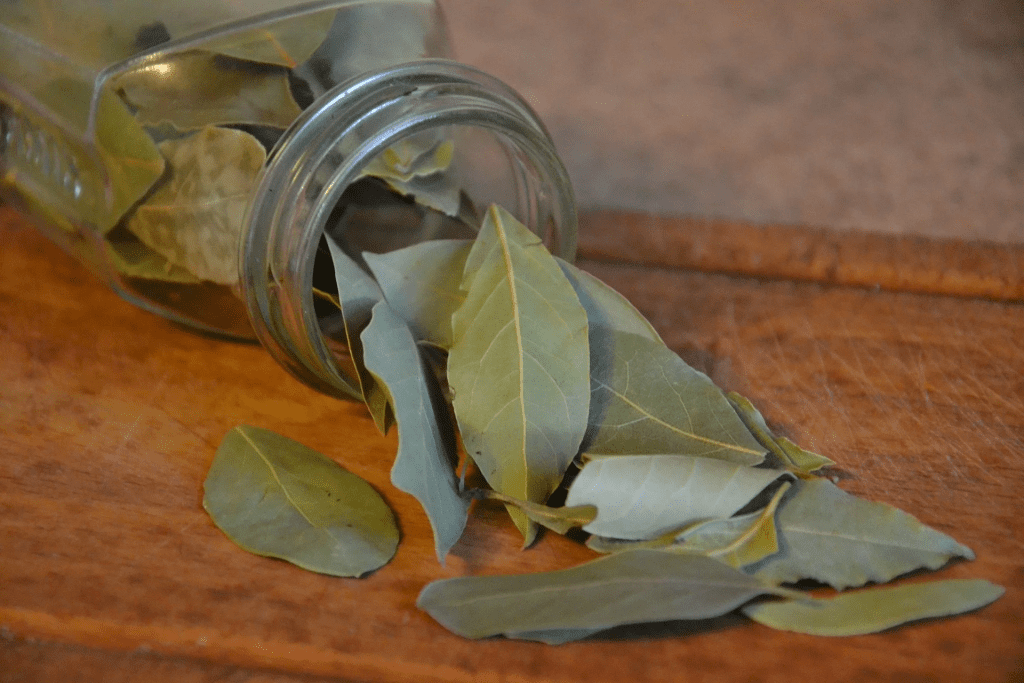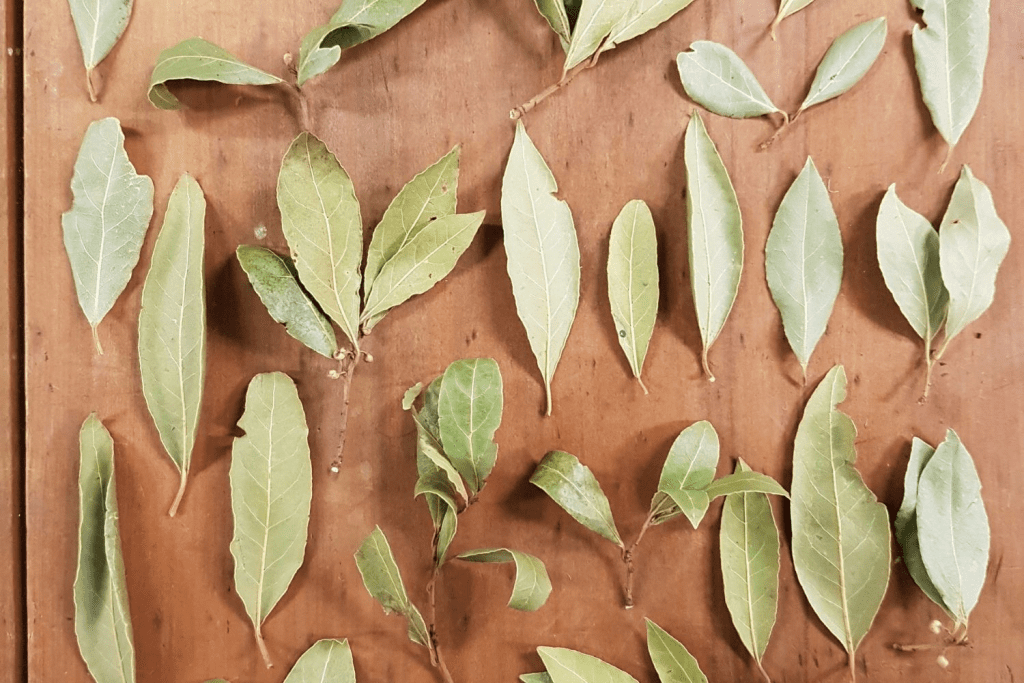If you’ve ever followed a recipe closely, you’ve probably tossed a bay leaf into a pot of stew, soup, or sauce. But then you wonder, “What does it actually do?” It’s hard to detect its taste or scent once the dish is done, which often leaves cooks questioning if it’s worth the effort or expense. So, is the bay leaf a culinary hero, or just a kitchen placebo? Let’s dive in to uncover its subtle yet essential role in cooking.
A Brief History of Bay Leaves in Culinary Tradition

Bay leaves have a long and storied history in both cooking and culture. The bay tree, particularly the Laurus nobilis species, was cherished by ancient Greeks and Romans. In these societies, bay leaves weren’t just culinary ingredients; they symbolized victory and honor, famously used to make crowns for champions and dignitaries.
As for cooking, bay leaves have been used for centuries in European, Mediterranean, and Asian cuisines. Their subtle aroma and flavor have long made them a staple in slow-cooked dishes, where their unique fragrance can fully develop. Even today, bay leaves remain a beloved ingredient in various traditional recipes, proving their enduring value in the kitchen.
Understanding the Aromatic Profile of Bay Leaves
Despite being subtle, bay leaves possess a complex aromatic profile. Their unique blend of scents includes delicate hints of pine, menthol, and pepper. This aromatic quality intensifies when the leaf is simmered in liquid, allowing its essential oils to release slowly and infuse the dish with a light, herby fragrance.
Unlike bold ingredients like garlic or chili, bay leaves don’t overpower a recipe. Instead, they work quietly in the background, rounding out the dish’s flavors and making the final result more cohesive. When used correctly, bay leaves add a subtle depth that enhances other ingredients, making each bite richer and more satisfying.
The Science Behind Bay Leaves: Key Compounds That Make the Magic
So, what’s in a bay leaf that makes it so unique? The answer lies in its essential oils, which contain a variety of aromatic compounds. Here are a few that contribute to its signature flavor:
- Eucalyptol: This compound adds a cool, minty, almost camphor-like quality.
- Eugenol: Known for its clove-like warmth, eugenol gives bay leaves a slight spice that enhances savory dishes.
- Myrcene: Often found in herbs and hops, myrcene lends a balsamic note, adding depth to the leaf’s overall flavor profile.
These compounds may be subtle on their own, but they have a powerful synergistic effect. Together, they add a well-rounded, slightly herby layer to soups, stews, and sauces, enriching the overall flavor without dominating the dish.
How Bay Leaves Enhance Flavor Without Being Overpowering
The real magic of a bay leaf lies in its ability to subtly elevate the dish without announcing itself. Unlike more assertive spices and herbs, bay leaves don’t create a distinct flavor but rather support the other ingredients by adding a gentle, savory depth. Think of it as the bassline in a song: you might not notice it right away, but without it, the music would feel incomplete.
Bay leaves work particularly well in slow-cooked recipes, where long exposure to heat allows their aromatic compounds to infuse the liquid. As the bay leaf simmers, its oils release slowly, enhancing the broth or sauce’s flavors and making the dish feel fuller and more balanced.
Popular Dishes and Applications for Bay Leaves

Bay leaves are versatile and appear in a variety of dishes worldwide. Let’s look at some classic uses:
- French Cuisine: In France, bay leaves are an essential component of bouquet garni, a bundle of herbs that flavors stocks, soups, and sauces.
- Indian Curries and Biryani: Bay leaves lend an earthy aroma to complex spice blends, adding depth without competing with other intense flavors.
- American Stews and Gumbos: In Southern cooking, bay leaves are commonly added to gumbos, chili, and broths, enhancing the rich, savory taste.
- Mexican and Caribbean Dishes: Bay leaves are often used in bean dishes, sauces, and soups, giving a subtle herby flavor that complements these cuisines’ bolder spices.
This wide range of uses highlights bay leaves’ versatility, showing how they bring understated depth to a variety of global dishes.
Do Bay Leaves Add Nutritional Value?
Although bay leaves are rich in nutrients like vitamin A, C, and folic acid, the amount released into a dish through a single leaf is minimal. Since bay leaves aren’t typically eaten whole, they don’t significantly contribute to the nutritional profile of a meal. However, their contribution to flavor makes them valuable nonetheless, even if their nutritional impact is negligible.
What to Use If You Don’t Have Bay Leaves

While there’s no perfect substitute for a bay leaf, a few alternatives can mimic its aromatic quality in a pinch:
- Thyme: With its earthy, slightly minty flavor, thyme can add a similar background note. Use sparingly to avoid overpowering the dish.
- Oregano: This herb has a robust flavor, so use it cautiously if substituting for a bay leaf. It can work in Mediterranean dishes but will create a different flavor profile.
- Basil or Sage: Both add a touch of herbiness, but they’ll create a more distinct flavor. Use these sparingly if you need to replicate bay leaves in a soup or stew.
Remember, these alternatives won’t replicate the exact nuance of bay leaves, but they can help round out flavors in similar ways.
Why Some People Struggle to Taste Bay Leaves’ Subtle Influence
One reason bay leaves might feel like a mystery is that their flavor is genuinely subtle. Not everyone’s palate can detect the nuances they bring to a dish. For some, bay leaves may be more of a “background actor,” playing a supporting role that can go unnoticed if you aren’t specifically looking for it.
However, even if you can’t directly taste the bay leaf, its absence might be more noticeable. Without it, many dishes can feel “flat” or one-dimensional, lacking that added depth and balance.
Are Bay Leaves a Waste of Money? Debunking the Myth

Some cooks feel bay leaves aren’t worth the cost, especially when their impact can be hard to detect. But their value lies in the subtle enhancement they bring, creating harmony among stronger flavors. While they’re not always essential, bay leaves can make a difference in dishes where a gentle, herby background note is desired.
For their minimal cost, bay leaves can add a lot of value, especially when used in larger, more complex recipes. Consider them an inexpensive way to give your meals an extra layer of sophistication.
Storing Bay Leaves for Maximum Freshness
To keep bay leaves potent and aromatic, store them in an airtight container away from light and heat. While fresh bay leaves have a more intense aroma, dried bay leaves last longer and can stay usable for years if stored properly. Replacing them periodically, however, ensures you’re getting the best flavor from your bay leaves.
Conclusion: Are Bay Leaves Really Worth It?
Bay leaves may seem unassuming, but they play a powerful role as the unsung heroes of many recipes. Their subtle blend of aromatics adds depth and enhances the harmony of flavors in dishes, especially in long-simmered recipes. While they may not make a bold statement on their own, their absence can often be felt in the form of a less cohesive, flatter flavor profile. So next time you’re tempted to skip the bay leaf, remember its quiet but essential role in making a dish feel complete. Embrace the bay leaf for what it is—a small but mighty element that brings a touch of magic to your culinary creations.


